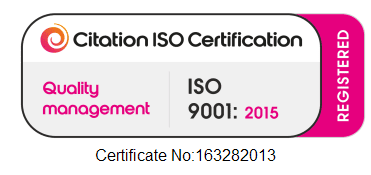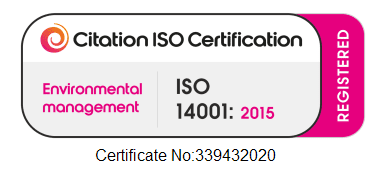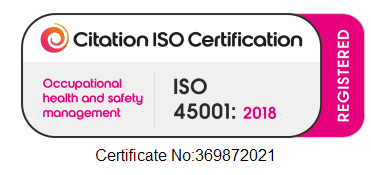E-Commerce: What Types of Packaging are Recyclable?
Sustainability
We have seen a 46% growth in ecommerce sales in 2020 compared to the previous year. With this increase in sales there has also been a surge in the amount of packaging waste which the consumer is responsible for disposing.
Alongside this growth, there has been a consumer shift in the global movement of creating a more circular economy with a focus on sustainability and recycling. In a recent survey almost 44% of consumers said that recyclable or reusable packaging are one of the most important features in their product choice. However, a study from 2018 showed that only 53.9% of packaging was recyclable.
With the responsibility of correctly disposing of this waste being placed back with the consumer we want to highlight the different forms of e-commerce packaging and the most environmentally conscious ways of disposing of them.
Exterior packaging
Corrugated cardboard
A cardboard box is often used for packaging larger goods or fragile products. Carboard is commonly recyclable and is accepted across all authorities for curbside collection. However, you still need to check what else is on the cardboard. You will need to remove any plastic tape or pouches as this will contaminate the recycling process.
Plastic film and bags
The latest studies show that 88% of the UK’s local councils do not accept polythene packaging for curbside pickup. Plastic packaging makes up a large amount of the packaging material from e-commerce companies. It is ideal for products that are lightweight and not fragile, such as clothes. The packaging takes up minimal space and maintains an airtight seal to products.
Although a large majority of councils do not offer a curbside recycling service for these materials, local plastic collection points do accept these materials. However, please check the packaging for further details as the recycling points do not accept all types of plastic. Check the recyclenow website to find out where your nearest collection point is and for advice on what plastic bags and film are eligible for recycling.
Padded mailers
Padded mailers are also unable to be recycled. Whilst many people try to remove the insular padding and recycle the paper and plastic padding separately, the adhesives used to bind these two materials are non-recyclable. As such the materials would contaminate the process. Many people choose to reuse the padded mail bags rather than dispose of them, they are often made of a strong and durable material so you will not compromise on the product protection.
Some companies have developed recyclable alternatives and these products, which should be clearly labelled as recyclable.
Envelopes
Standard paper envelopes are recyclable, however if they contain a plastic window you will need to remove this. The paper envelopes are recyclable via council curbside collections.
Void Fill
Bubble wrap
Whilst bubble wrap is recyclable, it is a more complex process and is not typically available via curbside collections. To discover if your borough facilitates the recycling of bubble wrap head to your local authorities’ website. If your council does not offer this service, a large majority of supermarkets will. You can use the recyclenow website to find the closet plastic film collection points.
Air pillows
Air pillows are one of the most popular uses of void fill. Using less plastic material and covering a larger surface area means that it is one of the most sustainable void fill alternatives. Whilst some air pillows are recyclable in design, for example paper pillows, there is still a large majority that are not widely recyclable.
You should always check the packaging to fully understand what type of substance it is. You can check out our Recycling Plastics: Explained blog to distinguish what the different symbols stand for.
Similar to bubble wrap, if your local authority does not offer curbside collection use the recyclenow website to find your closest collection point. It is suggested to release the air from the pillows before recycling, so a perfect excuse to obnoxiously pop every pillow.
Styrofoam & foam wrap
Styrofoam and foam wrap are comprised of polystyrene, this is recycling category 6 and means that it is incredibly hard to recycle. Whilst Expanded Polystyrene (EPS) such as styrofoam is 100% recyclable, not many councils can accept it for recycling. Check the recyclenow website to see if it is available in your area.
Whilst the majority of these products need to be sent to landfill in your general waste bin, polystyrene does eventually biodegrade, however this process is estimated to take from 500 to one million years.
Shredded cardboard
Another popular use of void fill is shredded cardboard. This promotes a circular economy, not only through reusing cardboard packaging to help protect products in transit, but it is also fully recyclable for the consumer.
Adhesives
Plastic tape
Standard plastic packaging tape is not recyclable. If your packaging has been sealed with plastic tape you must remove this and dispose of it in your general waste. When plastic tape is left on recyclable packaging such as a cardboard box this will contaminate the recycling process.
Water activated tape
Water activated tape is fast becoming the most popular form of carton sealing. Many leading e-commerce companies have opted to use this fully recyclable material in lieu of the standard plastic packaging tape. Not only is this tape paper based and as such universally recyclable it also provides tamper evidence, superior strength and requires less material use than its plastic equivalents. It also means for easier consumer recycling as there is no need to remove from the carboard packaging





